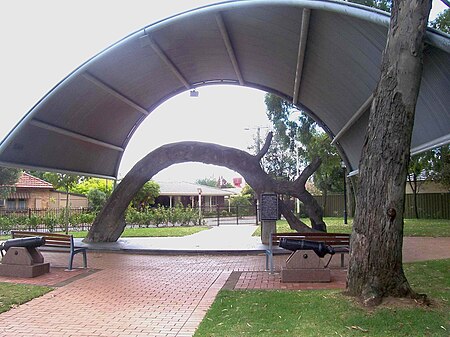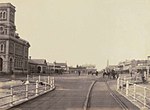The Old Gum Tree

The Old Gum Tree (also known as The Proclamation Tree) is a historic site in Glenelg North, South Australia. Near this tree on 28 December 1836, the British governor John Hindmarsh delivered the proclamation announcing the establishment of Government of the colony of South Australia. A ceremony is held each year at the site on Proclamation Day, with the current Governor reading out Hindmarsh's original speech.The tree itself, probably a red gum, had died by 1907. Its decayed outer surface was encased in concrete in 1963.It was listed on the now-defunct Register of the National Estate in 1978 and listed on the South Australian Heritage Register in 1980.
Excerpt from the Wikipedia article The Old Gum Tree (License: CC BY-SA 3.0, Authors, Images).The Old Gum Tree
MacFarlane Street, Adelaide Glenelg North
Geographical coordinates (GPS) Address Website External links Nearby Places Show on map
Geographical coordinates (GPS)
| Latitude | Longitude |
|---|---|
| N -34.970388888889 ° | E 138.52061111111 ° |
Address
The Old Gum Tree
MacFarlane Street
5045 Adelaide, Glenelg North
South Australia, Australia
Open on Google Maps






